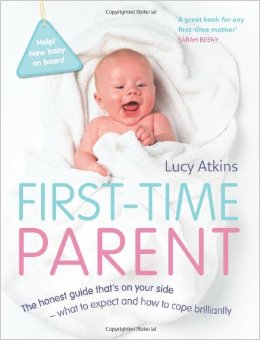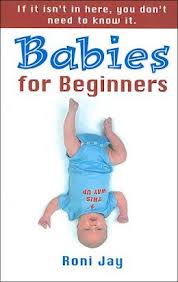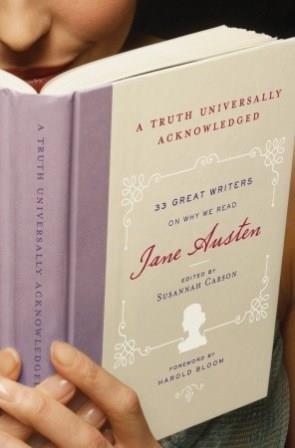
My way of preparing for change has always been to read about relevant subjects so it was inevitable that becoming a parent would lead to an influx of parenting books.
This is one I purchased online after seeing a number of positive reviews about it. The subtitle (‘the honest guide that’s on your side – what to expect and how to cope brilliantly’) was appealing and the image on the front cover of a chuckling baby reinforced the idea that this book would help to create a positive start to the mother-child relationship. (The apparent neutrality of the title is rather undermined by the one quotation on the front cover which claims that this is ‘a great book for any first-time mother’.)
The set-up
After a very brief introduction which aims to establish just how chaotic parenting can be and how normal (and therefore, presumably, able to be ‘on your side’) the author is, Atkins organises her book into eleven main sections which cover the first year of parenthood: preparing for your new baby, the likely events in the first few hours, the first few days, sleeping, crying, eating, growing, playing, health, your changed life and work. Her stated aim is to equip new parents to understand the likely challenges and triumphs of their baby’s first year and to help them trust themselves.
Who is Atkins and why should I trust her?
In her introduction Atkins reveals that she is a parent to three children and clearly feels that this is sufficient to allow her to offer advice to other parents. A little research reveals that she also writes about health, but essentially she is speaking to readers as one knowledgable parent to more newbie parents. Whether you find this actually quite reassuring or whether you are now wondering what distinguishes her from helpful mothers at the local bus stop is up to you.
An honest guide?
You do get honest advice. For instance, Atkins explains why you are not supposed to heat bottles of formula in the microwave…and how most mothers do. I did find this very reassuring as a novice parent because in many books and leaflets there is very clear-cut, quite ‘strict’ advice that other parents (especially my own!) will dismiss with an airy wave of the hand and dark comment about the nanny state. This book tries to reconcile the two by providing the official advice and explaining how many parents ‘really’ operate. I did find this approach quite positive.Atkins adopts a personal approach, including some very honest details about her own sexual experiences post-baby. In doing so, she clearly aims to reassure the reader that everyone is likely to find certain aspects of parenting challenging and that this is natural but not terminal. However, it is clear that, despite her efforts to quote a few other parents, the reader is primarily being given the benefit of Atkins’ own opinions, which does lead me to wonder how reliable and trustworthy her statements are. She frequently claims “studies show that” without any references or specifics, which makes her sound glib rather than trustworthy.
It also leaves me with several questions. When discussing weaning she states that: “six months old is the official kick-off point”. Why? Says who? Similarly, why am I aiming to give all drinks in cups, not bottles, by 18 months? In truth, I know the answers to those questions, but I know them because I have read other books, not because I read this one. If I was relying purely on this book, I would have a lot of questions still. I do not like being given rules without reason, ‘facts’ without at least a nod in the direction of the research / source of the consensus. Personally I prefer factual books to clearly refer to reliable experts / organisations. The lack of such anchors in this book made me hesitate to completely true Atkins’ advice.
On your side?
Possibly. Depending on what your side is. Atkins maintains a decisive, even authoritarian, tone which is outright judgemental on many topics: little man clothes are ‘silly’ and breastfeeding t-shirts are ‘pointless’ and a ‘fashion crime’. Personally, I have found breastfeeding t-shirts very useful, though I appreciate that they are not essential. For a guide that claims to be parent friendly I am just a little surprised by her tone at these junctures. Personally, I did not feel very supported in my choices at these points. This meant I was a little surprised when, upon discussing smacking, Atkins decided to “come off the fence”. Amusingly, her argument is lucid and polite at this point, and yet a mere paragraph later the reader is told “If anyone tells you to…[behaviour management strategy]…for God’s sake don’t – you’re trying to teach by example, aren’t you?” Yes, miss.
Similar examples abound. Atkins is pro ready to eat formula when out and about: “I’m not sure why anyone would do anything else, but you can also prepare a feed to take with you.” Hmm, why would someone not choose to buy ready made formula? Um…cost?! Her tone is not exactly supportive. At another point she suggests that refusing to ever allow your child sugar is “bordering on child abuse”. None of these examples detract from the fact that there is a wealth of useful advice in this book, but the tone can be slightly sharp, bearing in mind the book’s subtitle.
Speaking of formula, mums who have taken this route to feeding for whatever reason can at least feel reassured that, unlike some books, they will not be subjected to a barrage of commentary about how breast is best. In fact, there is no discussion of feeding decisions in this respect, merely lists of equipment and tips for each type of feeding. If, conversely, you would like some information on the pros and cons of each type of feeding, you will need to look elsewhere for this kind of information.
The focus of the work chapter is, unsurprisingly, how to cope with going back to work. However, I thought it was a bit of a shame that there was no equivalent section for staying at home. This section does seem to imply that a return to work is obligatory and could perhaps cause pressure on mums who think they might like to stay at home. Atkins also addresses the guilt of working mums and not the guilt of stay at home mums. (Can you guess which one she was?) As someone who is weighing up her options carefully I thought that this was a disappointing omission, and once again I did not really feel that Atkins was ‘on my side’.
What to expect?
I found that Atkins’ personal approach did help me to feel a little bit more relaxed about some subjects, but I also felt it had its limitations which her frequent references to her own experiences only highlighted. For instance, although Atkins makes an effort to include a range of experiences, such as what will happen if your baby needs to have special care or if you are a single parent, some aspects of parenting are almost or completely ignored, presumably because they do not fit in with her parenting experiences. Real nappies are mentioned very briefly with no guidance about how to use or what they cost or where to buy. In contrast, she is happy to suggest which brands of disposable nappies she trusts. Sleeping with your baby is only mentioned briefly in a set of instructions that tell you when NOT to do it. This means that the guide is not quite as comprehensive as the structured, bullet-pointed approach might suggest at a glance. Furthermore, her written style is very personal at times with frequent use of “I would…” and some mild bad language (e.g. “hell”) which some readers may find off-putting.
The book feels a little bit like an encyclopaedia. Many topics are addressed but most of them are only treated briefly. For example, Atkins spends one paragraph on breastfeeding at work with no mention of the legal or practical realities. This isn’t surprising as each section (first days, feeding, etc.) could easily be the subject of a complete book in itself. There is a contacts section at the back of the book which is organised by chapters and is useful for guiding readers towards more comprehensive sources of information.Atkins hits all the key notes, though there are some surprising omissions, which I noticed because I actually read this book when my son was already nearly three months old. For instance, Atkins states that there is “no reason” to wait to express breastmilk until babies are six weeks old. Most books and midwives will tell you to avoid doing this to prevent nipple confusion. Again, details like this are a reminder that much of the book consists of Atkins’ opinions presented as facts.
So will this teach first-time parents how to cope brilliantly?
Well, Atkins uses several colour pictures throughout which make the book quite pretty… More seriously, she includes clear guides in words and pictures for aspects of parenting including swaddling a newborn baby and changing a nappy. If I had not already done these things multiple times, I think I would have found these pictures helpful.As mentioned previously, this book gives a brief overview of most topics a new parent might reasonably be interested in. This could work well as a basic starting point for a parent who feels fairly comfortable in their own skin. I think a reader would already need to feel some confidence in their initial thoughts due to Atkins’ decisive (and sometimes judgemental) approach.
Information is organised and clear subtitles make it easy to find what you need. There is an easy to navigate index and bullet points are used where appropriate to make steps and lists clear. The section on illness is where this style comes into its own and Atkins’ bullet point approach is useful and reassuring. I thought that the brief guide to the most relevant illnesses / problems a baby might have and the suitable response / first aid was very useful and reassuring. I feel it is almost worth buying the whole book just to have that key information available at your fingertips in a clearly expressed form.Things can change quickly in government policy, healthcare and official advice on childcare. This book was published in 2009 so her figures relating to the cost of childcare should be revised upwards and new parents should be aware that the rules regarding child benefit have changed. In my area at least, the polio vaccine is no longer given as drips on the tongue and appointments for immunisations are not made by the doctor automatically and sent through the post. Parents will still need to check how systems work in their area. Although a few details like these will need to be amended in any reprint, most of the advice – on sleeping, eating, playing etc, – should be good for several years yet.
One minor thing I liked about this book was the fact that it is relatively easy to rest the book open on your knees without it closing and the print is easy to read with plenty of clean white space around the edges. This meant that I could read it while holding my son, which meant that I could actually find time to read it. This gave it a big advantage over other child care books!
Final thoughts
– you are confident enough in your own decisions and feelings to tolerate some rather definite opinions;
– you would like a parent-to-parent type guide rather than an expert-to-parent type guide.
– you like clear links to research and experts to validate advice given;
– you want detailed guidance on one or two particular aspect of child rearing rather than a diffuse guide to everything.


